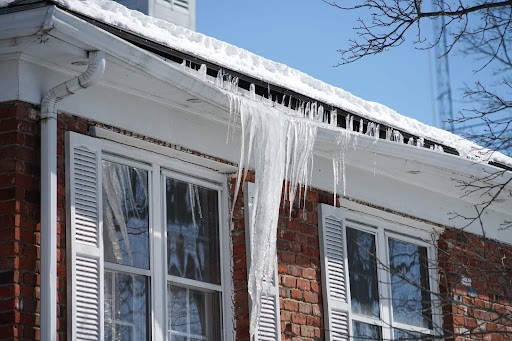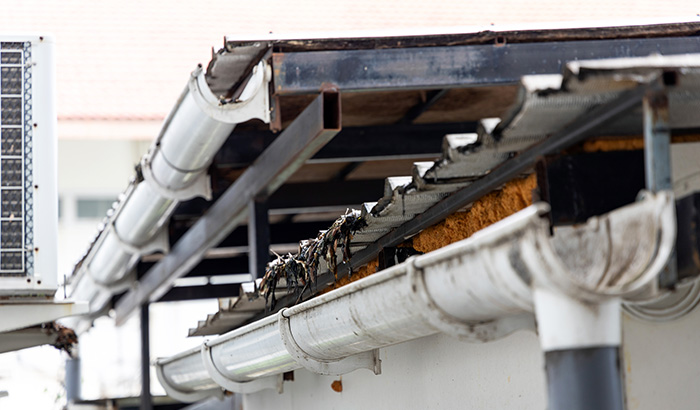As the colder months approach, you’ll want to consider winterizing your home. Winterizing is the process of preparing your home for the challenges of winter weather and is a vital step in safeguarding your property against potential water damage.
The drop in temperatures and increased precipitation during winter pose risks to your home, including frozen pipes, ice dams, and snow accumulation, all of which can lead to costly water damage. Taking proactive measures to winterize your home reduces these risks and keeps your home safe and dry throughout the season.
This blog will guide you through essential steps and strategies for effectively winterizing your home, providing you with the knowledge and tools to prevent water damage during winter. Remember, a little preparation now saves a lot of trouble later.
Understanding water damage risks in winter
Winter brings specific conditions that increase the risk of water damage in homes. Understanding these risks is the first step in effectively winterizing your home to prevent such damage.
Frozen pipes
Frozen pipes are one of the most common causes of water damage in winter. When temperatures drop, water in pipes can freeze, expand, and cause the pipes to burst, leading to significant water leakage and damage. The risk of this happening is higher in unheated interior spaces like basements, attics, and garages, as well as in pipes running along exterior walls.
Ice dams
Another issue is the formation of ice dams on the roof. Ice dams occur when heat from the attic melts snow on the roof, which then refreezes at the eaves, creating a dam that prevents melting snow from draining off the roof. This leads to water seepage under the shingles and into the home, causing damage to walls, ceilings, and insulation.
Snow accumulation
Heavy snow accumulation, especially on older or flat roofs, poses a risk of structural damage and water intrusion. The weight of the snow sometimes causes structural weakening, and as the snow melts, it seeps into any existing vulnerabilities in the roof, leading to water damage inside the home.
Insulating pipes and plumbing
Insulating pipes is a great way to winterize your home and prevent water damage from burst pipes. Here’s a step-by-step guide to effectively insulate your pipes:
1. Identify vulnerable pipes
First, identify the pipes most at risk of freezing. These typically include those in unheated interior spaces like basements, attics, garages, and pipes along exterior walls.
2. Choose the right insulation materials
Use pipe insulation materials such as foam rubber or fiberglass sleeves. These materials are readily available at hardware stores and are easy to install.
3. Install the insulation
For exposed pipes, fit the insulation sleeves over them, ensuring they are snug. Use duct tape to secure the insulation, especially at joints and bends if necessary. For pipes under sinks or in cabinets, consider adding extra insulation to the walls or opening cabinet doors to allow warm air to circulate around the pipes.
4. Seal gaps and cracks
Seal any gaps or cracks in your home’s exterior to prevent cold air from reaching the pipes. Pay special attention to areas where pipes enter the house.
Maintain a warm temperature
Keep your home at a consistent, warm temperature, even when you are not there. This helps prevent the interior pipes from freezing.
Let faucets drip
During extremely cold spells, let faucets drip slightly. This helps prevent pressure buildup in the pipes and reduces the risk of bursting.
Insulating your pipes is a simple yet effective way to prevent one of the most common causes of winter water damage. Taking these steps protects your home from the costly and inconvenient aftermath of frozen and burst pipes. Remember, a little preparation goes a long way in winterizing your home and preventing water damage.

Roof and gutter maintenance
Proper roof and gutter maintenance is another way to winterize your home. The roof is your home’s first line of defense against winter weather. Well-maintained gutters lead to effective water drainage that leads excess water away from your home and its foundation.
Inspecting the roof
Before winter sets in, inspect your roof for any signs of damage, such as missing, loose, or damaged shingles. Check for cracks or leaks, especially around chimneys, vents, and skylights. Promptly repair any issues to prevent water seepage from snow and rain.
Cleaning gutters and downspouts
Clear your gutters and downspouts of leaves, twigs, and debris. Clogged gutters lead to water overflow, damaging your home’s foundation and exterior. Ensure that downspouts direct water away from the foundation of your home.
Preventing ice dams
To prevent ice dams, ensure your attic is well-insulated and ventilated. This keeps the roof temperature consistent and prevents the melting and refreezing cycle. Installing heat cables along the eaves is another way to prevent ice dams.
Regular roof and gutter maintenance is a key aspect of winterizing your home. Ensuring that your roof is in good condition and your gutters are clean prevents water damage to your home during the winter months.
Sealing and insulating your home
Sealing leaks and drafts are fundamental to winterizing your home to prevent water damage. Proper sealing and insulation help maintain consistent indoor temperatures, reduce heating costs, and protect against moisture-related issues.
Sealing leaks and drafts
Begin by inspecting your home for any air leaks, especially around windows, doors, and where pipes and wires enter the house. Use weather stripping or caulk to seal these areas. This not only keeps cold air out but also prevents warm, moist air from condensing on cold surfaces — a potential cause of water damage.
Insulating walls and attics
Proper insulation in your walls and attic helps keep your home warm and dry. In the attic, check that the insulation is evenly spread and has no gaps. Insulation should also cover the attic floor to prevent heat from rising into the attic, which contributes to ice dam formation.
For walls, consider adding insulation, especially if your home is older and not well-insulated. Two ways to add insulation are from the inside through drywall or from the outside if you’re replacing siding.
Basement insulation
Basements are prone to moisture and cold. Insulating your basement walls helps keep this area dry and warm. Use moisture-resistant insulation materials to prevent mold and mildew growth.
Properly sealing and insulating your home is a key step in winterizing to prevent water damage. This proactive approach protects your home from potential water damage and enhances overall comfort and energy efficiency during winter.
Preparing for emergencies
Even with thorough winterization, it’s wise for homeowners to prepare for potential emergencies related to water damage. An emergency plan helps mitigate the impact of unexpected winter-related issues.
Developing an emergency plan
Start by creating a clear, actionable plan for dealing with water damage emergencies. This plan should include a list of steps to take immediately after discovering water damage, such as shutting off the main water supply and contacting a professional restoration service.
Knowing how to shut off the water
Familiarize yourself with the location of your home’s main water shut-off valve. In the event of a pipe burst or a major leak, quickly shutting off the water helps prevent damage from spreading. Make sure all family members know where the valve is and how to operate it.
Assembling an emergency kit
Put together an emergency kit with essential items such as a flashlight, batteries, a first-aid kit, and basic tools. Also, include contact information for emergency services, insurance agents, and professional restoration services.
Staying informed
Keep an eye on weather forecasts during the winter months. Awareness of upcoming storms or extreme cold snaps allows you to take additional precautions.
Protecting valuables
Identify and protect important documents and valuables that would be at risk in a water damage emergency. Store them in a safe, waterproof location.
Preparing for emergencies is often forgotten when it comes to winter prep, but it is still important. By having a plan in place and the necessary supplies on hand, you can act swiftly and effectively to minimize damage and ensure the safety and security of your home and family during winter emergencies.

Professional winterization services
While you can handle many aspects of winterizing your home independently, there are times when professional assistance is invaluable. Consider seeking professional help if your home has a history of winter-related water damage, if you’re unsure about how to properly insulate and seal your home, or if you have an older home that may have hidden vulnerabilities.
Professional winterization services offer thorough inspections that can identify areas at risk of water damage that a homeowner might overlook. Experts in this field have the knowledge and tools to effectively insulate and seal your home and address all potential problem areas. Professionals can also provide specialized services, such as installing advanced insulation materials or weatherproofing solutions that offer greater protection against winter elements.
Opting for professional winterization services ensures a higher level of protection against water damage and provides peace of mind, knowing that your home is well-prepared to withstand the harsh winter conditions.
Protect your home with Utah Disaster Clean Up & Restoration
If you have concerns about water damage, fire damage, or mold remediation, Utah Disaster Clean Up & Restoration is here to help. Our team of experts has the equipment and experience needed to provide top-notch restoration services and advice.
We’re only a call away if you need help winterizing your home, cleaning up after a severe storm, or addressing water damage. Contact Utah Disaster Clean Up & Restoration today to ensure your home is well-prepared for winter and beyond.



